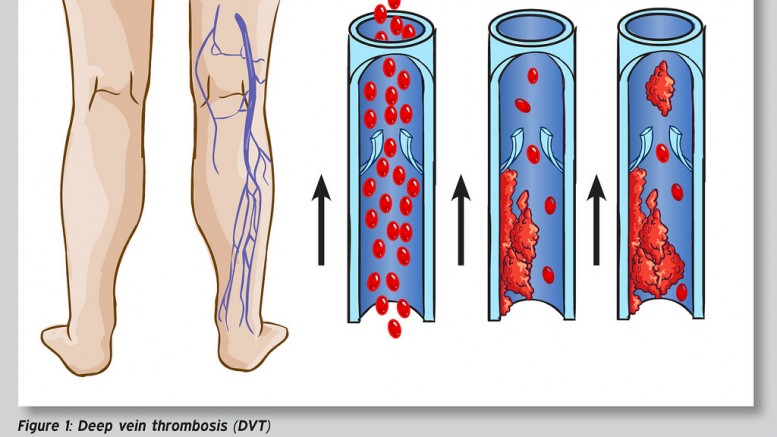Vascular surgeons treat several dangerous emergent and chronic conditions. Their expertise helps patients survive strokes, aneurysms, and other diseases of the blood vessels. There have been several exciting advances in the field which have made it possible for more patients to receive life-saving treatment.
Dr. Eric Fishman, a vascular surgeon affiliated with Greenwich Hospital, New York-Presbyterian Lawrence Hospital, White Plains Hospital Center, and St. Joseph’s Medical Center, explains some of the newest innovations in vascular surgery that are pushing the boundaries of medical technology and helping more patients survive traumatic events.
What is Vascular Surgery?
Vascular surgery is a specialty involved with surgery on the blood vessels, except in the brain and heart. Vessels carry oxygen-rich blood to the body’s tissues and carry away waste. Without blood flowing smoothly, it is impossible for the human body to function. For example, hardening of the arteries or atherosclerosis can cause the blood vessels to become restricted, impeding blood flow to the rest of the body.
Vascular surgeons perform both open surgery and endovascular procedures. Each type of surgery has appropriate applications that are best for certain types of injury or disease.
Some conditions that a vascular surgeon can treat include aortic aneurysms that happen outside the brain, peripheral vascular disease, atherosclerosis, and deep vein thrombosis. These diseases can cause serious blood flow problems and in serious cases, lead to permanent injury or death. Vascular surgeons like Dr. Eric Fishman are responsible for keeping a patient’s blood vessels healthy and encouraging the patient to take part in non-surgical interventions like improving their diet and engaging in more exercise.
Innovations in Vascular Surgery
In recent years, the endovascular revolution has come to dominate the field of vascular surgery. Endovascular surgery is far less invasive than traditional open surgery, leading to less disruption to surrounding areas and a faster recovery time. It is predicted that 90 percent of abdominal aortic aneurysms will be treated endovascularly by 2026. However, there are many conditions where an open or hybrid approach remains the best option for the patient’s recovery.
Advances in Endovascular Surgery
One of the newest procedures available to treat blood clots is the use of nanodroplets and ultrasound technologies. Researchers at the University of North Carolina at Chapel Hill and North Carolina State University have created a new way to perform these life-saving treatments on stubborn blood clots.
A catheter is pushed to the site of the blood clot, and lipid nanodroplets containing low-boiling point liquid perfluorocarbons are applied to the clot. Ultrasound waves activate these droplets to turn them into boiling, expanding microbubbles. Ultrasound waves continue to break up the clot mass through vibration.
Another recent development in vascular surgery involves a device called CoolSeal. This device is able to divide and seal vessels using controlled heat to avoid damaging surrounding tissues. The system is able to operate at 360 degrees, providing a complete seal of the vessel.
Robotic surgery is another field that has made significant advances in recent years, including its use in vascular surgery. A new system called the Symani robotic surgery platform has been developed in Italy. The system allows for the scaling of hand movements at up to 20X magnification. The equipment also automatically removes tremors. The equipment is intended to help with replantations, peripheral nerve repairs, free-flap reconstructions, and lymphatic surgery in conjunction with vascular surgery applications. Surgeons are optimistic that this new technology will be able to produce excellent results in procedures that were difficult in the past.
Another new piece of robotic equipment available to vascular surgeons is the Miniaturized in Vivo Robotic Assistant or MIRA. This equipment can help to perform minimally invasive surgeries in the abdomen. It is a small and accessible piece of equipment that requires fewer incisions than competing platforms. The product does not need a dedicated room and can be used easily in any operating room.
Another exciting development in vascular surgery is the implementation of electronic blood vessels. Chinese and Swiss scientists have worked on this system. These artificial blood vessels are flexible and biodegradable. Artificial replacements for blood vessels have been available for some time, but they previously caused inflammation in the surrounding tissues. These new artificial vessels are projected to be less disruptive to the body and to last longer than previous versions.
Technological Innovations Save Lives
Vascular surgeons have a wide variety of tools at their disposal, and each tool is appropriate for a different condition. Understanding how vascular surgery works is fascinating. These surgeons are able to treat life-threatening conditions and improve their patients’ quality of life.
When vascular surgeons like Dr. Eric Fishman use new methods of performing procedures, they can achieve life-saving surgeries with less invasive methods and fewer incisions. Robotic technology helps surgeons accomplish their work with more precision, increasing a patient’s chance of survival.Vascular surgeons have a unique position in their field, treating a wide variety of conditions. When patients suffer from vascular diseases, they can rest assured that surgeons are ready to help them recover using the newest methods.
